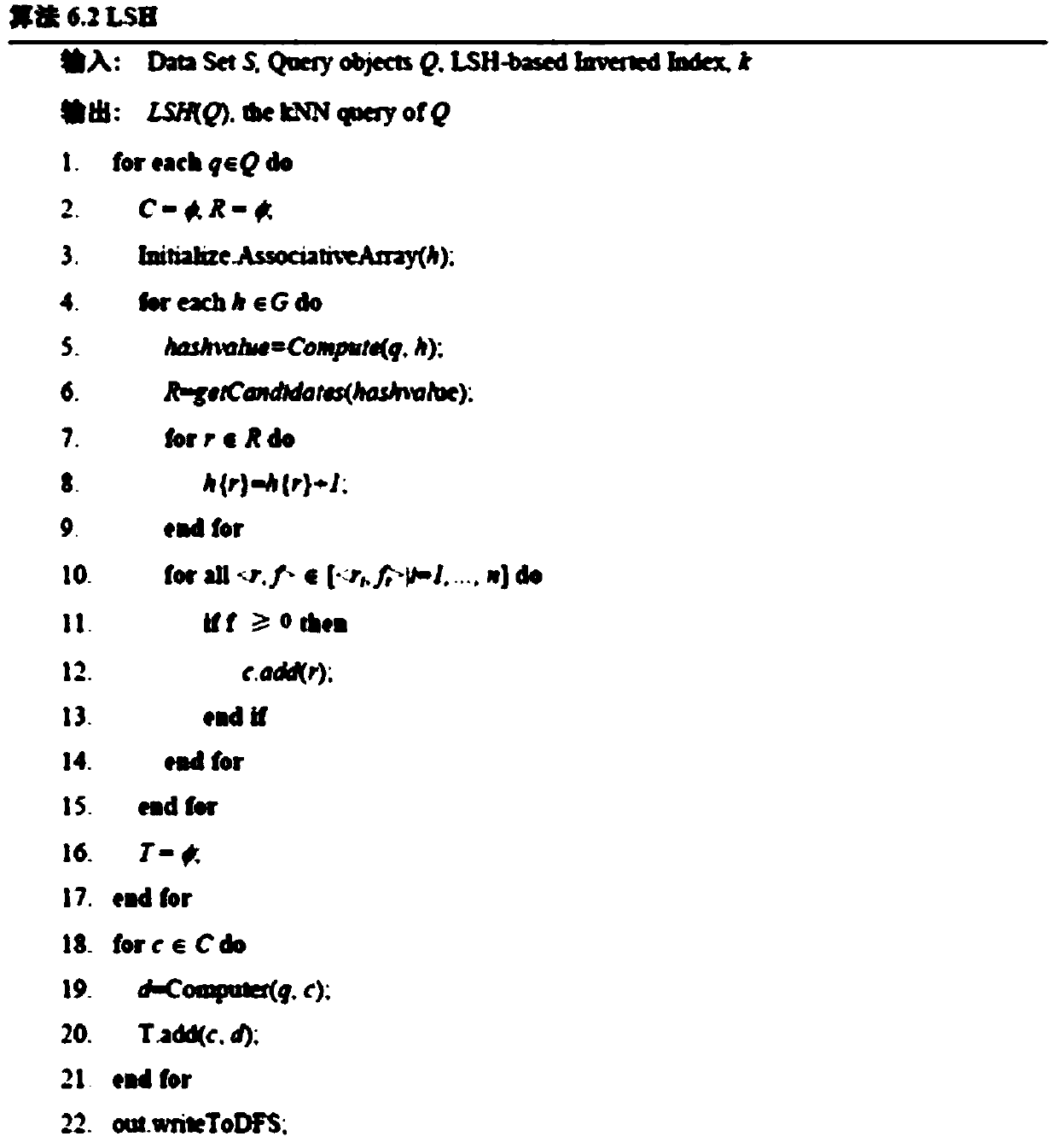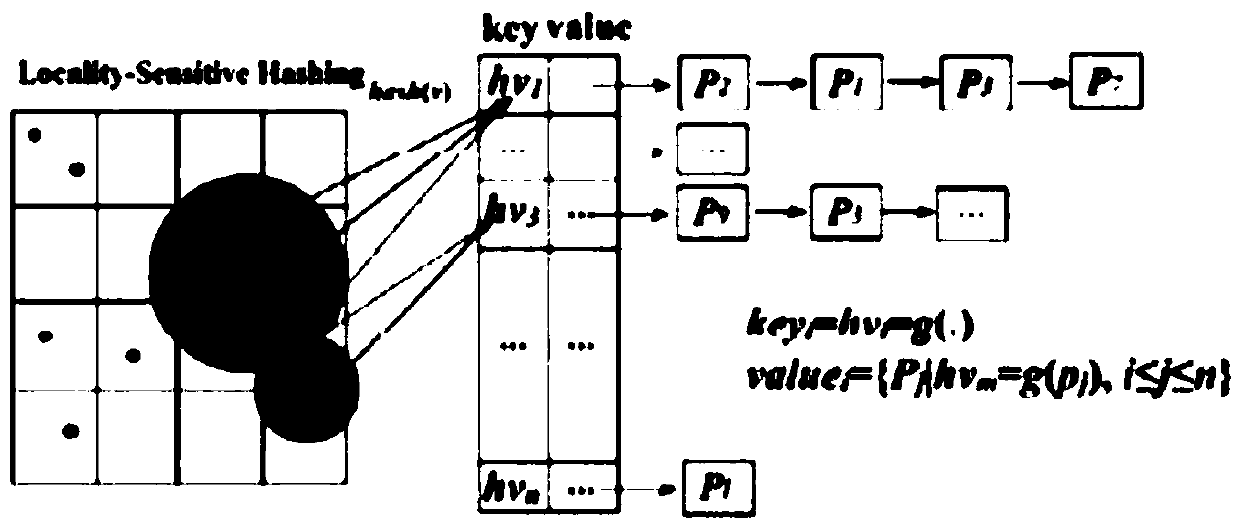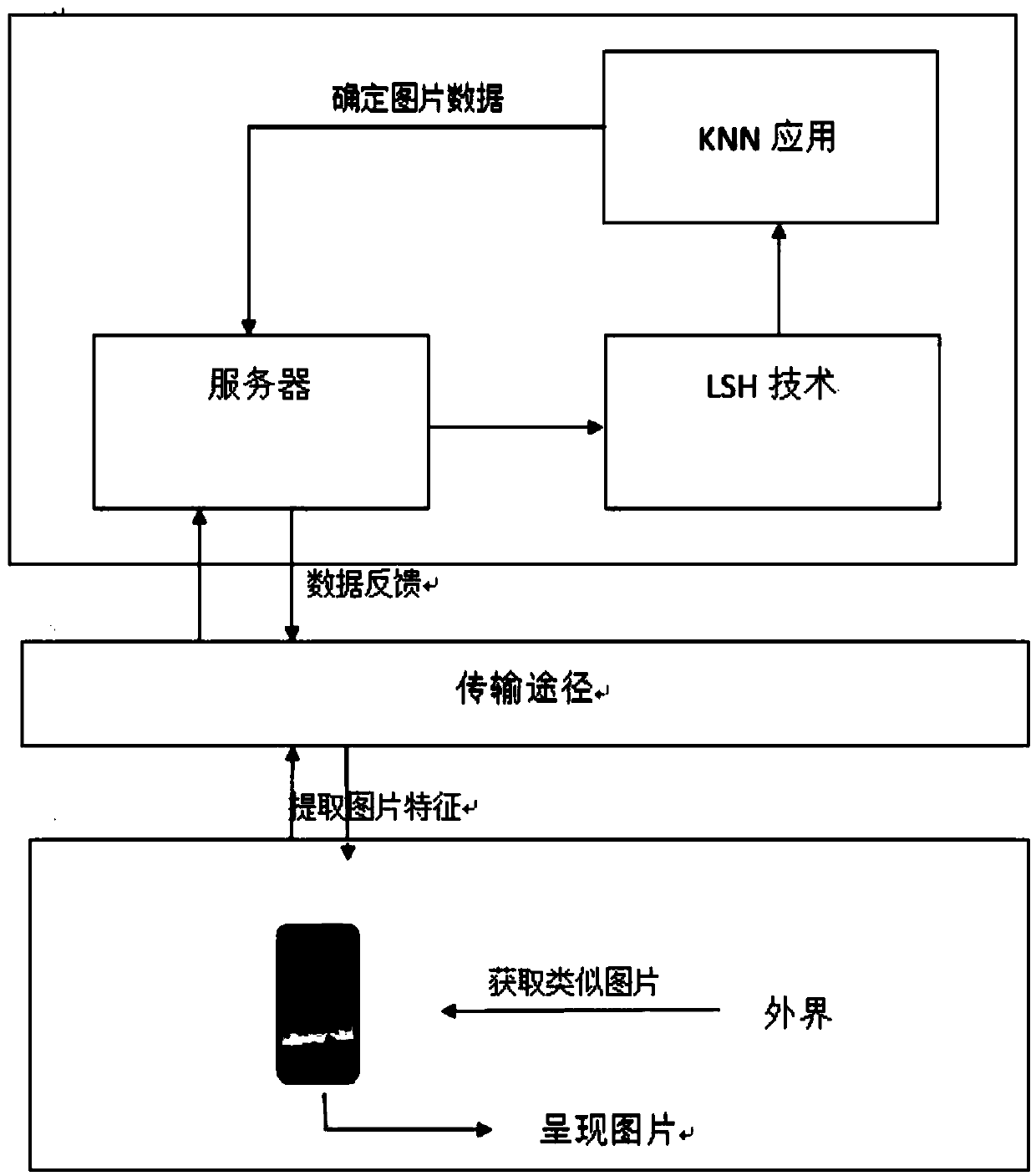High Dimensional Approximate Image Retrieval Method Based on Inverted lsh in Cloud Computing Environment
A cloud computing environment, image retrieval technology, applied in still image data retrieval, still image data query and other directions, can solve problems such as excessive amount of information, inconsistency between required information and displayed pictures, inability to adapt to distributed indexes, etc. time saving effect
- Summary
- Abstract
- Description
- Claims
- Application Information
AI Technical Summary
Problems solved by technology
Method used
Image
Examples
Embodiment 1
[0013] Example 1: A high-dimensional approximate image retrieval method based on inverted LSH in a cloud computing environment, including steps: a client collects and extracts image features, and communicates with a cloud center service system; the cloud center service system utilizes the powerful distributed computing capabilities of the cloud to establish a Invert the position-sensitive hash index and query the neighboring images corresponding to the captured image.
[0014] Generally, the kNN algorithm is based on a distributed inverted index, but a position-sensitive hash index is not a distributed index. In order to adapt to a distributed index, a distributed inverted index based on a position-sensitive hash is established: in this technical solution, When establishing a position-sensitive hash index, separate out several Hash buckets, use the Hash bucket as the Key, and use the point set in the Hash bucket as the Value, and use MapReduce for distributed solution. This ...
Embodiment 2
[0021] Example 2: This embodiment has the same technical solution as Embodiment 1, and more specifically: this embodiment discloses a specific method for establishing a distributed inverted index based on position-sensitive hash, and stores the data set in the HDFS distributed index in advance. In the file system, when starting a task, read in some configuration files LSH hash function family through the distributed cache mechanism, each Map task reads in the data fragment specified by the JobTracker as input, and then according to the given hash function for each A data object is subjected to hash mapping for dimensionality reduction, and a high-dimensional vector is passed through the hash map to obtain a hash value. This hash value is used as an index value. For example, for a high-dimensional vector v, pass the i-th hash function hi( .) After mapping, the hash value hi(v) is obtained, and finally output in the form of key-value pair. For each high-dimensional data vector...
Embodiment 3
[0045] Embodiment 3: This embodiment has the same technical solution as Embodiment 1 or 2, more specifically: this embodiment discloses a query method, the query is to establish a kNN query based on a position-sensitive hash distributed inverted index, The steps are: set the high-dimensional data set as S, and S is the existing large-scale image library in the image retrieval system, such as a large number of plant image galleries, and each image in the image library is preserved as a 128-dimensional high-dimensional image library. Dimensional features. The set of query objects is Q, and Q is the query image object. For example, a group of images of flowers are taken. After high-dimensional feature extraction is performed first, a feature set is formed. For each query object q belongs to Q, the correlation function h is initialized, h belongs to G, G is a hash family, LSH is a multi-round hash algorithm, different hash functions will get different hash results. h correspond...
PUM
 Login to View More
Login to View More Abstract
Description
Claims
Application Information
 Login to View More
Login to View More - R&D
- Intellectual Property
- Life Sciences
- Materials
- Tech Scout
- Unparalleled Data Quality
- Higher Quality Content
- 60% Fewer Hallucinations
Browse by: Latest US Patents, China's latest patents, Technical Efficacy Thesaurus, Application Domain, Technology Topic, Popular Technical Reports.
© 2025 PatSnap. All rights reserved.Legal|Privacy policy|Modern Slavery Act Transparency Statement|Sitemap|About US| Contact US: help@patsnap.com



